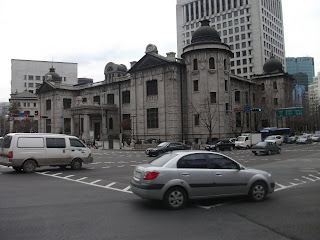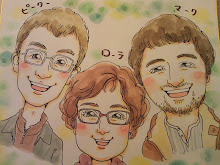Final chapter today, hope you're ready for it.
I'd like to start with a message to the Polish tour group that were with us in the DMZ today:
"What part of 'do not take pictures unless told that you may' do you not understand?!
What part of 'do not look back and keep moving until you have entered the building' is beyond you?!
Do you not feel a sense of urgency, perhaps, when armed soldiers tell you that you will face criminal charges if you do not comply?!
Consider yourselves lucky those illegal photos you took were the only things you lost, and not your cameras or, I don't know,
your lives!!
Grow up!!"
That's it.
So as you have no doubt gathered by now we have successfully entered and then left North Korean soil in the form of the DMZ, and I can report that it was an excellent experience. So massively tense it was unbelievable, but totally worth it to get the proper experience of the state of the Korean War which, I can tell you, is still going on.

This, ladies and gentlemen, is the last stretch of South Korea before everything blurs into shades of neutrality. The DMZ extends across over 200km of land, spanning the whole of the Korean Peninsula, and 4km north-south, with 2km of North Korean land and 2km of South Korean. Within that are two little villages, one for each side, who farm the rice and ginseng fields and don't have to pay tax or anything. Obviously I'd much rather be showing you pictures of the place, but as my rant may have mentioned a lot of photos were simply banned outright, so I'll have to describe.
Which reminds me, we were told why jeans were not allowed as well and it's pretty funny. The jeans in question are that faded sort, the one with all the holes in it, as apparently the officials are afraid that the North Koreans will take pictures of you in your tattered jeans and use it as propaganda, saying that the south is so poor that its residents cannot afford to fix their own clothing! We laughed at that.
So yeah, first stop on the tour was an observatory/museum a few miles into the South, which told us about what we suspect (and they had to stress that a lot of it really is 'suspect') about life in the North, as well as the details of the war. We had lunch there; more bimbibap. Not that I dislike the stuff, its just the only thing I can say is proper Korean food that I've eaten here, and that's not a great thought. Also ate a raw clove of garlic, which I regret.

For reference, the woman at the front is Michelle, our tour guide, and the others are Polish. Thought you'd like to know.
Anyway, from there we went off to Panmunjeom and its Joint Security Area (JSA). It didn't take long, just a single passport check and we were into Camp Bonifas. A slideshow briefing told us more of the war and what we could expect in the JSA proper, and we were escorted to the facility by a stern-looking Korean officer with a Californian accent. The JSA is a bunch of buildings in a little compound, conveniently colour-coded. Blues are South Korean and... unpainted are North. We were warned beforehand not to "fraternize" with the North soldiers, and the whole time we were there we had them watching over us from their concrete fort in the north of the compound. Very unnerving, it really showed just how tense this whole conflict has become, with both sides watching each other, waiting for the other to make a move.

There you go, that's a lot of the compound right there.
That was the main brunt of the tour, with the rest simply being a coach ride to the gift shop. There was one very interesting bit in the JSA, though, and that was being shown the conference room used by both sides for negotiations. Like the JSA itself, the table in the center of the room was split in two, but it was the only place in the whole world where civilians were allowed into North Korean military property.
Sorry if that was a bit short, it is late and I have a bunch of people trying to get me to concentrate on assisting in the construction of a fictitious universe.
Thanks for reading. I did not die.





















